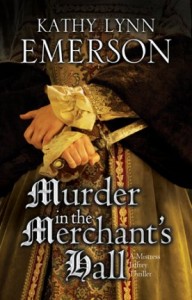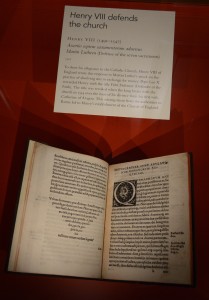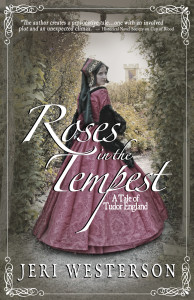 Relevant History welcomes Kathy Lynn Emerson, aka Kaitlyn Dunnett, author of over fifty books. She won the Agatha Award in 2008 for best mystery nonfiction for How to Write Killer Historical Mysteries and was an Agatha Award finalist in 2014 in the best mystery short story category for “The Blessing Witch.” Currently she writes the contemporary Liss MacCrimmon Mysteries (The Scottie Barked at Midnight) as Kaitlyn and the historical Mistress Jaffrey Mysteries as Kathy (Murder in the Merchant’s Hall). The latter series is a spin-off from her earlier “Face Down” series and is set in Elizabethan England. To learn more about her and her books, visit her web site and group blog, and follow her on Facebook.
Relevant History welcomes Kathy Lynn Emerson, aka Kaitlyn Dunnett, author of over fifty books. She won the Agatha Award in 2008 for best mystery nonfiction for How to Write Killer Historical Mysteries and was an Agatha Award finalist in 2014 in the best mystery short story category for “The Blessing Witch.” Currently she writes the contemporary Liss MacCrimmon Mysteries (The Scottie Barked at Midnight) as Kaitlyn and the historical Mistress Jaffrey Mysteries as Kathy (Murder in the Merchant’s Hall). The latter series is a spin-off from her earlier “Face Down” series and is set in Elizabethan England. To learn more about her and her books, visit her web site and group blog, and follow her on Facebook.
*****
It always amazes me that television shows and movies claim they have to change historical facts for the sake of the story. What really happened, especially in sixteenth-century England, has all the action, adventure, sex, violence, and intrigue anyone could ask for.
In my Mistress Jaffrey Mysteries, and in the earlier Face Down mystery series, as well as in the non-mystery historical novels I wrote as Kate Emerson, I set my fictional stories against a backdrop that is as real as I can make it. I’ve been reading and writing about Tudor England for over forty years and maintain the online “A Who’s Who of Tudor Women,” containing over 2000 mini-biographies, to share some of my research. When writing fiction, the technique I use most frequently is to start with a little known bit of history, find out everything I can about it, and then extrapolate from the facts to create my plot. It might not have happened that way…but it could have.
Sir Francis Walsingham, spymaster
 Sir Francis Walsingham, Queen Elizabeth’s principal secretary and spymaster and a secondary character in Murder in the Merchant’s Hall and the first book in the series, Murder in the Queen’s Wardrobe, appears in fictionalized form in a great many novels, so the challenge for me is to make my portrayal of him accurate but also distinct from what others have done. Here’s the tidbit I found to extrapolate from in Murder in the Merchant’s Hall: in August 1583, the queen sent Walsingham to Scotland on a diplomatic mission, and while he was there he fell ill. His poor health continued after his return to England in mid-October. It struck me that this might affect his ability to supervise his vast spy network and therefore offer one of his underlings an opportunity to advance his own agenda. From there it wasn’t much of a leap to imagine that this man’s plans could go awry and cause all kinds of difficulties for my fictional amateur detective, Rosamond Jaffrey.
Sir Francis Walsingham, Queen Elizabeth’s principal secretary and spymaster and a secondary character in Murder in the Merchant’s Hall and the first book in the series, Murder in the Queen’s Wardrobe, appears in fictionalized form in a great many novels, so the challenge for me is to make my portrayal of him accurate but also distinct from what others have done. Here’s the tidbit I found to extrapolate from in Murder in the Merchant’s Hall: in August 1583, the queen sent Walsingham to Scotland on a diplomatic mission, and while he was there he fell ill. His poor health continued after his return to England in mid-October. It struck me that this might affect his ability to supervise his vast spy network and therefore offer one of his underlings an opportunity to advance his own agenda. From there it wasn’t much of a leap to imagine that this man’s plans could go awry and cause all kinds of difficulties for my fictional amateur detective, Rosamond Jaffrey.
The underling in question was right there waiting for me. His name was Walter Williams, called “Watt” by his boss. In December 1582, Walsingham put him in charge of the house in Seething Lane that served as headquarters for his intelligence gatherers. Some historians dismiss Williams as incompetent, but the truth is that not much is known about him. Prior to 1583 he delivered letters between England and the Continent, conducted surveillance, and went undercover in various prisons as an agent provocateur. In June 1583, he acted as the contact for a spy working undercover in the French embassy.
Plot and subplot
Since the books in the Mistress Jaffrey series are murder mysteries, a fictional murder is at the heart of the plot, but the subplot comes straight from history. In addition to material from other sources, I found a treasure trove of factual detail in Giordano Bruno and the Embassy Affair (1991) and Under the Molehill: An Elizabethan Spy Story (2001), both written by John Bossy. The second book adds information he discovered after the publication of the first. To blend plot and subplot, I have my sleuth, Mistress Rosamond Jaffrey, visit the French embassy as part of an attempt to clear a friend of the charge of murder. There she has a chance encounter with a fellow named Throckmorton, an Englishman who has been translating coded letters from Mary, Queen of Scots for the French ambassador. This propels Rosamond into the middle of the spy story. Walter Williams’s attempts to first warn her off and then use her for his own purposes create twists and turns in both plot and subplot.
In real life, Throckmorton was arrested, and both the French and Spanish ambassadors were implicated in a conspiracy to invade England, overthrow Elizabeth, and put Mary on the throne in her place. Could an English gentlewoman visiting the French embassy have overheard a vital clue and reported it to the authorities? Since we will never know all the details that led up to Throckmorton’s arrest, I see no reason why it couldn’t have happened that way.
*****
 A big thanks to Kathy Emerson. She’ll give away an autographed hardback copy of Murder in the Merchant’s Hall to someone who contributes a comment on my blog this week. I’ll choose the winner from among those who comment by Friday at 6 p.m. ET. Delivery is available is the U.S. only.
A big thanks to Kathy Emerson. She’ll give away an autographed hardback copy of Murder in the Merchant’s Hall to someone who contributes a comment on my blog this week. I’ll choose the winner from among those who comment by Friday at 6 p.m. ET. Delivery is available is the U.S. only.
**********
Did you like what you read? Learn about downloads, discounts, and special offers from Relevant History authors and Suzanne Adair. Subscribe to Suzanne’s free newsletter.






